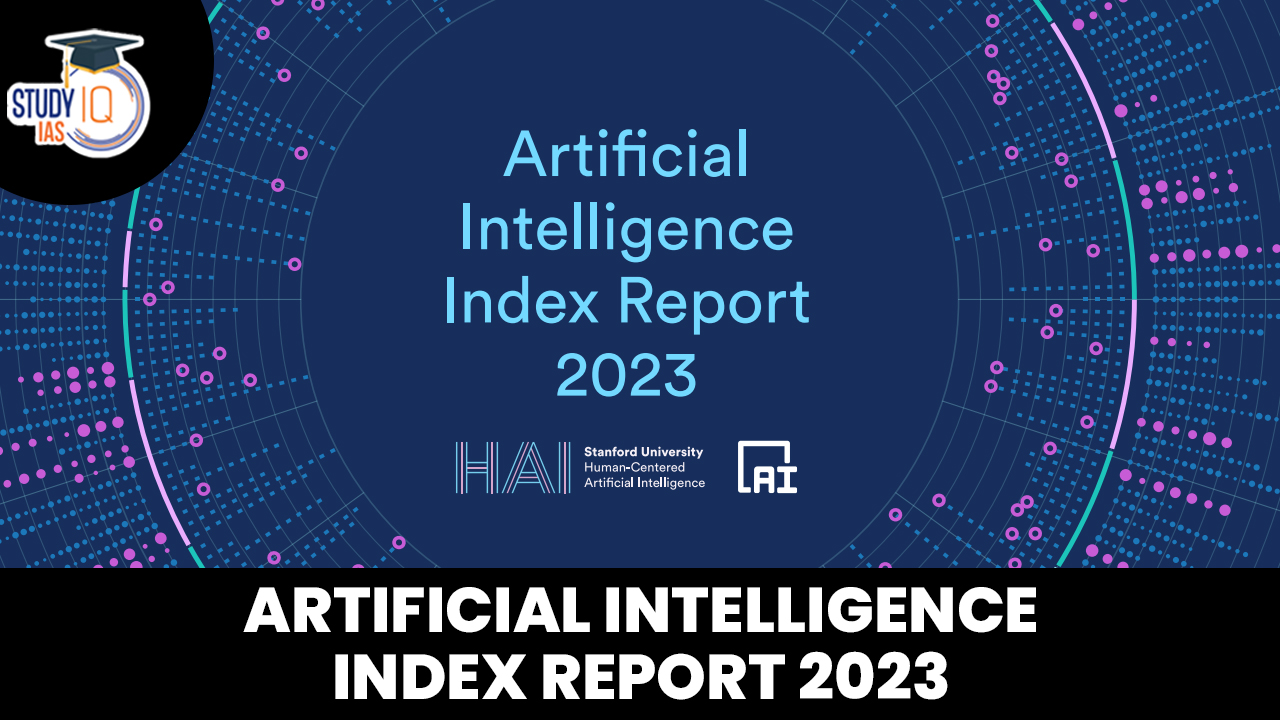Table of Contents
Context: In 2022, software developers in India contributed to over 24% of AI related projects in GitHub, the most in the world, according to Stanford’s latest Artificial Intelligence Index Report 2023.
Key AI indicators from the AI Index 2023
- Publication count: Between 2010 and 2021, AI publications increased significantly, rising from 2 lakh in 2010 to nearly 5 lakhs by 2021.
- Types of publications: In 2021, journal articles constituted 60% of all AI publications, followed by conference papers and repository submissions. The remaining was a mix of books, book chapters, theses, and unidentified document types.
- Collaboration: International partnerships among scholars, industry specialists, and others play a vital role in advancing STEM fields.
- They foster quick sharing of new concepts and team expansion.
- Over the last 12 years, the predominant collaborations have been between the United States and China, witnessing an approximate fourfold increase since 2010.
- Top ten institutions: Since 2010, the institution with the highest overall AI paper output has been the Chinese Academy of Sciences.
- In fact, all the top nine, out of ten institutions, in terms of the number of AI publications released were from China with Massachusetts institute of Technology featuring last.
- GitHub AI Projects: Since 2011, there has been a consistent rise in the number of AI-related projects on GitHub, escalating from 1,536 projects in 2011 to 3,47,934 by 2022.
- In 2022, a significant portion of AI projects on GitHub, amounting to 24.2%, came from software developers in India, the European Union and United Kingdom contributed 17.3%, while the United States was responsible for 14% AI Projects.
Top Ten Takeaways from the Report
| Industry races ahead of academia |
|
| Performance saturation on traditional benchmarks |
|
| AI is both helping and harming the environment |
|
| The world’s best new scientist is AI? |
|
| The number of incidents concerning the misuse of AI is rapidly rising |
|
| The demand for AI-related professional skills is increasing across virtually every American industrial sector |
|
| For the first time in the last decade, year-over-year private investment in AI decreased |
|
| While the proportion of companies adopting AI has plateaued, the companies that have adopted AI continue to pull ahead |
|
| Policymaker interest in AI is on the rise |
|
| Chinese citizens are among those who feel the most positively about AI products and services. Americans, not so much |
|


 Nipah Virus (NiV): Structure, Testing Me...
Nipah Virus (NiV): Structure, Testing Me...
 Elon Musk’s America Party: A New Chapt...
Elon Musk’s America Party: A New Chapt...
 India and Trinidad and Tobago: Strengthe...
India and Trinidad and Tobago: Strengthe...





















